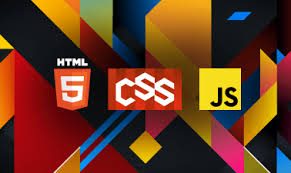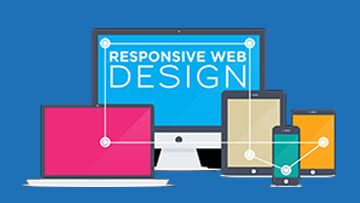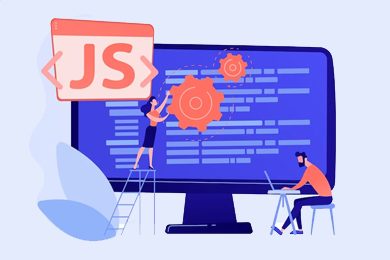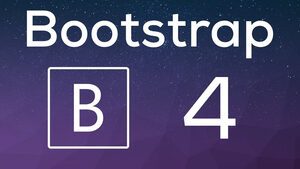This plan includes
- Limited free courses access
- Play & Pause Course Videos
- Video Recorded Lectures
- Learn on Mobile/PC/Tablet
- Quizzes and Real Projects
- Lifetime Course Certificate
- Email & Chat Support
What you'll learn?
- You will from basics, how to write code in HTML properly to design a website
- You will learn how to design a website from basics level using HTML and CSS
- You will learn Advance Coding for HTML5 and CSS3
- You will learn how to Insert images, videos, audios and work on that in a web page
- You will learn How to create a basic structure of website or web theme in HTML and CSS
- You will learn Advance CSS, as transition, animation, 3d transform and 2d transform etc.
Course Overview
Introduction to Master in HTML & CSS Coding for Web Design
Looking to learn HTML and CSS? Faisal Zamir's "Master in HTML CSS Course" has got you covered! With over 105+ video lectures spanning across 13+ hours, this course is suitable for students of all levels. Upon completion, students will receive a certificate of completion and the added assurance of a 30-day money-back guarantee.
With Faisal Zamir's years of expertise and experience in the field, students can trust that they are receiving the best education possible. Don't wait any longer to start your journey towards mastering HTML and CSS - enroll today in the "Master in HTML CSS Course"!
Why it is important to take Enrollment in this course?
- Foundation of Web Design - HTML and CSS are the foundation of web design, providing the basic building blocks for creating websites and web applications.
- Control over Design and Layout - Learning HTML and CSS gives web designers greater control over the design and layout of their websites, allowing them to create custom designs that meet their specific needs.
- Responsive Design - HTML and CSS allow web designers to create responsive designs that adapt to different screen sizes and devices, making their websites more accessible and user-friendly.
- Better User Experience - HTML and CSS are essential for creating a better user experience, including faster load times, easy navigation, and intuitive layouts.
- Search Engine Optimization (SEO) - HTML and CSS play a critical role in search engine optimization, ensuring that websites are properly structured and formatted for search engines to crawl and index.
- Accessibility - HTML and CSS are crucial for creating accessible websites that are usable by all users, including those with disabilities.
- Compatibility - HTML and CSS are compatible with all web browsers and devices, making them essential for creating websites that work seamlessly across different platforms.
- Collaboration - Learning HTML and CSS allows web designers to collaborate more effectively with developers and other team members, providing a common language for creating and implementing website designs.
- Cost Savings - Learning HTML and CSS can save web designers and businesses money, as it allows them to create and maintain their own websites without the need for expensive third-party services.
- Career Opportunities - Knowledge of HTML and CSS is in high demand in the job market, providing web designers with valuable skills and career opportunities.
********** HTML CSS Course for Web Designing ****************
"If you aspire to become a professional web designer, it is essential to have a strong foundation in HTML and CSS. Taking a comprehensive course in these programming languages is an ideal way to acquire the necessary skills and knowledge.
Our course on HTML and CSS for web design is specifically designed to teach you how to create visually appealing and responsive websites with coding.
You will learn the fundamental principles of web design, including how to structure web pages, format text and images, and style layouts using CSS. Through hands-on exercises and projects, you will gain practical experience in creating functional and user-friendly websites.
By the end of the course, you will have the skills and will have a foundation for creating professional-grade websites that meet the needs of clients and users.
Whether you are new to web design or seeking to enhance your skills, this course is an excellent investment in your future career prospects."
What is HTML for Web Designing?
HTML, or hypertext markup language, is a fundamental programming language used in web design. It is responsible for creating the basic structure and layout of websites by providing a set of tags and elements that define the content and its appearance.
For example, if you want to create a webpage with text, images, and video, you would use HTML to structure and format the content.
HTML is a markup language, which means that it uses special tags to define elements such as headings, paragraphs, lists, and links. These tags tell web browsers how to display the content on the webpage. For example, the
tag is used to define a paragraph of text, while the tag is used to insert an image into the webpage.
HTML also allows you to control the appearance of your webpage by specifying attributes such as width, height, and color. For example, you can use the width and height attributes to control the size of an image or video, or the color attribute to specify the color of text or background.
One of the main benefits of HTML is its simplicity and ease of use. It is a relatively easy language to learn, even for beginners, and does not require any special software or tools to write and test code. All you need is a text editor and a web browser to get started.
In summary, HTML is a basic and fundamental programming language used in web design to create the structure and layout of websites. It allows web designers to insert media fields like images, videos, or audio, or control text-based content by writing code. HTML is a simple and easy-to-learn language that provides web designers with the necessary tools to create visually appealing and user-friendly websites.
What is CSS for Web Designing?
CSS, or cascading style sheet, is an essential programming language used in web design to create visually appealing and responsive websites. It is used in conjunction with HTML to style and format the content on a webpage.
Without CSS, a website would look bland and unattractive, and the user experience would be compromised.
CSS can be used in different ways, including inline, internal, and external styles. Inline styles are used to style individual HTML elements within the webpage, while internal styles are used to apply styles to an entire webpage. External styles are stored in separate CSS files and can be applied to multiple webpages, providing consistency in design and layout.
Learning CSS is crucial for becoming a professional web designer. It is essential to learn CSS from a basic level and practice regularly to gain a strong foundation in the language. Our course on CSS provides in-depth training on CSS with coding exercises to help you master the language.
There are many important concepts and properties to learn in CSS, including padding, margin, width, height, text properties, positioning, transform, 2D and 3D transform, animation, and more. By the end of the course, you will have a comprehensive understanding of CSS and be able to create visually appealing and responsive websites that meet the needs of clients and users.
In summary, CSS is a critical programming language used in web design to create visually appealing and responsive websites. It is used with HTML in different ways and is necessary to learn for anyone who wants to become a professional web designer. Our course on CSS provides comprehensive training with coding exercises to help you master the language and create beautiful websites.
30 Days Money Back Gurentee HTML CSS for Web Designing
We stand behind our course and are confident that it will meet your expectations. However, we understand that sometimes things don't work out as planned, and that's why we offer a no-risk money-back guarantee. We want you to feel confident and comfortable when investing in your education and career.
To request a refund, simply contact our customer support team within 30 days of your purchase date. We will process your refund promptly, and you will receive a full refund of the course fee.
In summary, our course on HTML and CSS comes with a 30-day money-back guarantee to provide you with peace of mind and assurance that you are investing in a high-quality course.
If for any reason you are not satisfied with the course, you can request a full refund within 30 days of the purchase date. We stand behind our course and are committed to your success.
Thank you
Faisal Zamir
Pre-requisites
- There is no prerequisites for this HTML & CSS Course for Web Design
Target Audience
- It is for those, who want to become a good Web Designer
Curriculum 108 Lectures 11:01:48
Section 1 : Chapter 01 HTML Web Designing
- Lecture 2 :
- HTML Introduction and Basic Structure
- Lecture 3 :
- HTML Attributes with Examples
- Lecture 4 :
- HTML Headings and Paragraph with Examples
- Lecture 5 :
- HTML Comments with Examples
- Lecture 6 :
- HTML Quotations with Example
Section 2 : Chapter 02 HTML Web Designing
- Lecture 1 :
- HTML Style Attribute with Examples
- Lecture 2 :
- HTML with CSS in Three Methods with Examples
- Lecture 3 :
- HTML Block and Inline Level Element with Examples
- Lecture 4 :
- div and span Element with Examples
- Lecture 5 :
- HTML Class with Examples
- Lecture 6 :
- HTML ID Attributes with Examples
- Lecture 7 :
- Bookmarking with ID and Hyperlinks with Examples
Section 3 : Chapter 03 HTML Web Designing
- Lecture 1 :
- HTML Formatting tags with Examples
Section 4 : Chapter 04 HTML Web Designing
- Lecture 1 :
- HTML Color with Examples
Section 5 : Chapter 05 HTML Web Designing
- Lecture 1 :
- HTML Image insertion with Examples
- Lecture 2 :
- Image Importance in Website
- Lecture 3 :
- Image as Link in HTML
- Lecture 4 :
- HTML File Location Path with Examples
- Lecture 5 :
- HTML Links with Examples
- Lecture 6 :
- HTML Absolute and Relative URLs with Examples
Section 6 : Chapter 06 HTML Web Designing
- Lecture 1 :
- HTML Table Part 1 with Examples
- Lecture 2 :
- HTML Table Part 2 with Examples
Section 7 : Chapter 07 HTML Web Designing
- Lecture 1 :
- HTML Unordered and Ordered List with Examples
- Lecture 2 :
- HTML Data Definition List with Example
Section 8 : Chapter 08 HTML Web Designing
- Lecture 1 :
- HTML Head Part Elements P1
- Lecture 2 :
- HTML Head Part Elements P2
Section 9 : Chapter 09 HTML Web Designing
- Lecture 1 :
- HTML Layout Semantic Element
- Lecture 2 :
- HTML Layout Creating Methods
- Lecture 3 :
- HTML Layout DIV and HTML5
- Lecture 4 :
- HTML Web Layout using Div Tag P1
- Lecture 5 :
- HTML Web Layout using Div Tag P2
- Lecture 6 :
- HTML Web Layout using HTML5 Semantic Tags
- Lecture 7 :
- HTML Bad & SEO Friendly Layout
Section 10 : Chapter 10 HTML Web Designing
- Lecture 1 :
- JavaScript in HTML
- Lecture 2 :
- PHP in HTML
Section 11 : Chapter 11 HTML Web Designing
- Lecture 1 :
- What is Semantic Element
- Lecture 2 :
- List of Semantic Elements
- Lecture 3 :
- Layout Creative Semantic Elements
- Lecture 4 :
- HTML Recommendation
- Lecture 5 :
- Complete HTML Characters Details
Section 12 : Chapter 12 HTML Web Designing
- Lecture 1 :
- Introduction to HTML Form
- Lecture 2 :
- HTML Form Elements Introduction
- Lecture 3 :
- input Element in Form
- Lecture 4 :
- Radio and Checkbox
- Lecture 5 :
- Input Element Attributes
- Lecture 6 :
- Label Element in Form
- Lecture 7 :
- Select Element in Form
- Lecture 8 :
- Textarea Element in Form
- Lecture 9 :
- Button Element in Form
- Lecture 10 :
- Fieldset and Legend
- Lecture 11 :
- Action Attribute in Form
- Lecture 12 :
- Name Attribute in Form
- Lecture 13 :
- GET and POST method
- Lecture 14 :
- Novalidate Attribute in Form
- Lecture 15 :
- HTML Form autofocus attribute
- Lecture 16 :
- AutoComplete Attribute in Form
Section 13 : Chapter 13 HTML Web Designing
- Lecture 1 :
- Multimedia in Details
- Lecture 2 :
- Audio Insertion in Web Page
- Lecture 3 :
- HTML Audio Attributes
- Lecture 4 :
- All Audio Events
- Lecture 5 :
- Video Insertion in Web page
- Lecture 6 :
- HTML Video Attributes
- Lecture 7 :
- All Video Events
Section 14 : Chapter 01 CSS Web Designing
- Lecture 1 :
- CSS Chapter_01_Introduction
- Lecture 2 :
- CSS Introduction with Examples
- Lecture 3 :
- CSS Simple Selectors with Examples
- Lecture 4 :
- CSS in HTML with Different Methods
- Lecture 5 :
- CSS Attributes Selectors with Examples
- Lecture 6 :
- CSS Combinators with Examples
- Lecture 7 :
- important Keyword in CSS with Examples
- Lecture 8 :
- CSS_Comments_with_Examples
- Lecture 9 :
- CSS_Colors_with_Examples
- Lecture 10 :
- CSS Background in Web Page with Examples
Section 15 : Chapter 02 CSS Web Designing
- Lecture 1 :
- CSS Button with Examples
- Lecture 2 :
- CSS Fonts with Examples
- Lecture 3 :
- CSS Shadow with Example
- Lecture 4 :
- CSS Text Properties with Examples
- Lecture 5 :
- CSS Gradient with Examples
- Lecture 6 :
- CSS Opacity Property with Examples
Section 16 : Chapter 03 CSS Web Designing
- Lecture 1 :
- CSS Float Property with Examples
- Lecture 2 :
- CSS Overflow with Example
- Lecture 3 :
- CSS Display Property with Example
- Lecture 4 :
- CSS Visibility with Example
- Lecture 5 :
- CSS Multiple Column with Examples
- Lecture 6 :
- CSS Icons Font Awesome with Examples
Section 17 : Chapter 04 CSS Web Designing
- Lecture 1 :
- CSS Box Model
- Lecture 2 :
- Border in CSS with Examples
- Lecture 3 :
- CSS Outline with Examples
- Lecture 4 :
- CSS Padding with Examples
- Lecture 5 :
- CSS Margin with Examples
Section 18 : Chapter 05 CSS Web Designing
- Lecture 1 :
- CSS Specificity with Examples
Section 19 : Chapter 06 CSS Web Designing
- Lecture 1 :
- CSS Pseudo Element
- Lecture 2 :
- CSS Pseudo Classes Part 1
- Lecture 3 :
- Pseudo Class for Form Part 2
Section 20 : Chapter 07 CSS Web Designing
- Lecture 1 :
- CSS 2D Transform
- Lecture 2 :
- CSS 3D Transform
- Lecture 3 :
- CSS Transition
- Lecture 4 :
- CSS Animation
Section 21 : Chapter 08 CSS Web Designing
- Lecture 1 :
- CSS Table
- Lecture 2 :
- CSS Pagination
- Lecture 3 :
- CSS Link
- Lecture 4 :
- CSS List
- Lecture 5 :
- CSS Navigation or Nav bar
- Lecture 6 :
- CSS Drop Down Nav
- Lecture 7 :
- CSS Form
Section 22 : Chapter 09 CSS Web Designing
- Lecture 1 :
- CSS Media Queries P1
- Lecture 2 :
- Make a Responsive Design with CSS Media Queries P2
Our learners work at
Frequently Asked Questions
How do i access the course after purchase?
It's simple. When you sign up, you'll immediately have unlimited viewing of thousands of expert courses, paths to guide your learning, tools to measure your skills and hands-on resources like exercise files. There’s no limit on what you can learn and you can cancel at any time.Are these video based online self-learning courses?
Yes. All of the courses comes with online video based lectures created by certified instructors. Instructors have crafted these courses with a blend of high quality interactive videos, lectures, quizzes & real world projects to give you an indepth knowledge about the topic.Can i play & pause the course as per my convenience?
Yes absolutely & thats one of the advantage of self-paced courses. You can anytime pause or resume the course & come back & forth from one lecture to another lecture, play the videos mulitple times & so on.How do i contact the instructor for any doubts or questions?
Most of these courses have general questions & answers already covered within the course lectures. However, if you need any further help from the instructor, you can use the inbuilt Chat with Instructor option to send a message to an instructor & they will reply you within 24 hours. You can ask as many questions as you want.Do i need a pc to access the course or can i do it on mobile & tablet as well?
Brilliant question? Isn't it? You can access the courses on any device like PC, Mobile, Tablet & even on a smart tv. For mobile & a tablet you can download the Learnfly android or an iOS app. If mobile app is not available in your country, you can access the course directly by visting our website, its fully mobile friendly.Do i get any certificate for the courses?
Yes. Once you complete any course on our platform along with provided assessments by the instructor, you will be eligble to get certificate of course completion.
For how long can i access my course on the platform?
You require an active subscription to access courses on our platform. If your subscription is active, you can access any course on our platform with no restrictions.Is there any free trial?
Currently, we do not offer any free trial.Can i cancel anytime?
Yes, you can cancel your subscription at any time. Your subscription will auto-renew until you cancel, but why would you want to?
Instructor

509605 Course Views
29 Courses



 Tech & IT
Tech & IT
 Business
Business
 Coding & Developer
Coding & Developer
 Finance & Accounting
Finance & Accounting
 Academics
Academics
 Office Applications
Office Applications
 Art & Design
Art & Design
 Marketing
Marketing
 Health & Wellness
Health & Wellness
 Sounds & Music
Sounds & Music
 Lifestyle
Lifestyle
 Photography
Photography




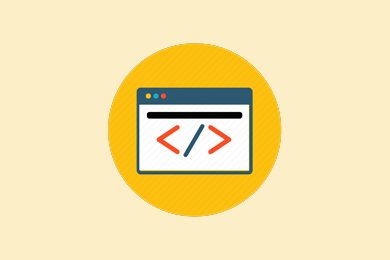


.jpg?crop=smart&width=600&height=400)




